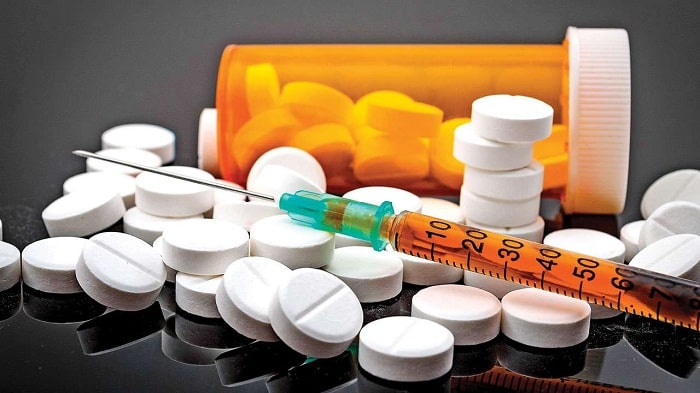Introduction
The proliferation of substandard or falsified drugs poses a significant threat to public health worldwide, affecting millions of people and exacerbating existing health disparities. Certain populations are particularly vulnerable to the consequences of these counterfeit pharmaceuticals, facing heightened risks of treatment failure, adverse reactions, and even death. This article explores the groups most susceptible to the impact of substandard or falsified drugs and provides insights into the global efforts to address this critical issue.
Vulnerable Populations
Low-Income Countries
One of the primary cohorts vulnerable to substandard or falsified drugs is found in low-income countries with limited regulatory infrastructure and resources. These nations often struggle to enforce stringent pharmaceutical quality control measures, making it easier for counterfeit drugs to infiltrate the market. Patients in these regions may unknowingly purchase medications that lack the necessary therapeutic efficacy or, worse, contain harmful substances. The World Health Organization (WHO) reports that approximately 10% of drugs circulating in low- and middle-income countries are substandard or falsified, contributing to treatment failures and the emergence of drug-resistant diseases.
Vulnerable Patient Groups
Certain patient populations are more susceptible to the adverse effects of substandard or falsified drugs, including children, pregnant women, and the elderly. Pediatric patients often require specialized formulations and dosages, making it challenging to ensure the availability of high-quality medications tailored to their needs. Pregnant women, too, face unique health challenges, and substandard drugs can jeopardize both maternal and fetal well-being. The elderly, with compromised immune systems and multiple comorbidities, are at an increased risk of experiencing severe consequences from ineffective or contaminated medications.
Patients in Developing Healthcare Systems
Countries with developing healthcare systems may lack the infrastructure to effectively regulate and monitor the pharmaceutical supply chain. Insufficient surveillance mechanisms and inadequate regulatory frameworks make it easier for substandard or falsified drugs to enter the market, putting patients at risk. The vulnerability of these populations is underscored by the fact that they often rely heavily on public healthcare systems, where resources may be stretched thin, making it challenging to implement robust quality control measures.
Global Efforts to Address the Issue
The Global Surveillance and Monitoring System
The WHO has established the Global Surveillance and Monitoring System for substandard and falsified medical products. This initiative aims to strengthen national and international collaboration in tracking and responding to cases of substandard or falsified drugs. By providing a platform for information sharing and capacity building, this system helps countries enhance their regulatory capabilities and better protect their populations from the risks associated with counterfeit pharmaceuticals.
International Collaboration and Regulatory Harmonization
To address the cross-border nature of the substandard and falsified drug trade, international collaboration and regulatory harmonization are crucial. Organizations such as the Pharmaceutical Inspection Co-operation Scheme (PIC/S) work towards aligning pharmaceutical regulations globally, facilitating the exchange of information, and promoting mutual recognition of regulatory standards. These efforts contribute to a more robust global regulatory framework, reducing the vulnerability of populations to substandard or falsified drugs.
Strengthening Pharmaceutical Supply Chains
Improving the integrity of pharmaceutical supply chains is fundamental to combating substandard and falsified drugs. The use of technology, such as track-and-trace systems and blockchain, can enhance transparency and traceability throughout the supply chain. This not only helps prevent the entry of counterfeit drugs but also enables rapid identification and removal of substandard products from circulation.
Real-time Intelligence and Remediation
An essential component of strategies designed to discover and remove SF drugs from the supply chain must incorporate the testing of products to determine their quality and safety. The targeted introduction of chemical analysis where these medicines are located in the supply chain – hospitals, pharmacies, warehouses, manufacturer inventories and the like – provides actionable information for stakeholders to issue alerts, sequester questionable products for further testing, replace suspect shipments, purchase alternative medicines, and monitor patient status, among other interventions.
The ARTiFACTS Verify platform offers an integrated approach to identifying substandard and falsified drugs that have entered the pharmaceutical supply chain:
- Identification of suspect medicines through on-site testing at any point in the supply chain using paper analytical device technology that is cost-effective and requires minimal training.
- Confirmation of the properties of medicines failing the initial test through further testing at specialist labs, using advanced scientifically recognized techniques, including high-performance liquid chromatography, mass spectroscopy, among others.
- Organisation of all data captured for managing workflows, analysing and reporting results.
- Coverage of over half of WHO’s 600 Essential Medicines.
Enhanced data security by recording results on a purpose-built blockchain provides an immutable record of test results, including active pharmaceutical ingredients, product origin, manufacturer and other data essential for effective intervention.
Conclusion
Substandard or falsified drugs pose a grave threat to public health, particularly affecting vulnerable populations in low-income countries, specific patient groups, and those in developing healthcare systems. Global efforts, led by organizations such as the WHO and initiatives like the Global Surveillance and Monitoring System, aim to strengthen regulatory frameworks, enhance international collaboration, and fortify pharmaceutical supply chains. By addressing the root causes and implementing comprehensive solutions, the global community can mitigate the risks associated with substandard or falsified drugs, ultimately safeguarding the health and well-being of millions of individuals around the world.


















